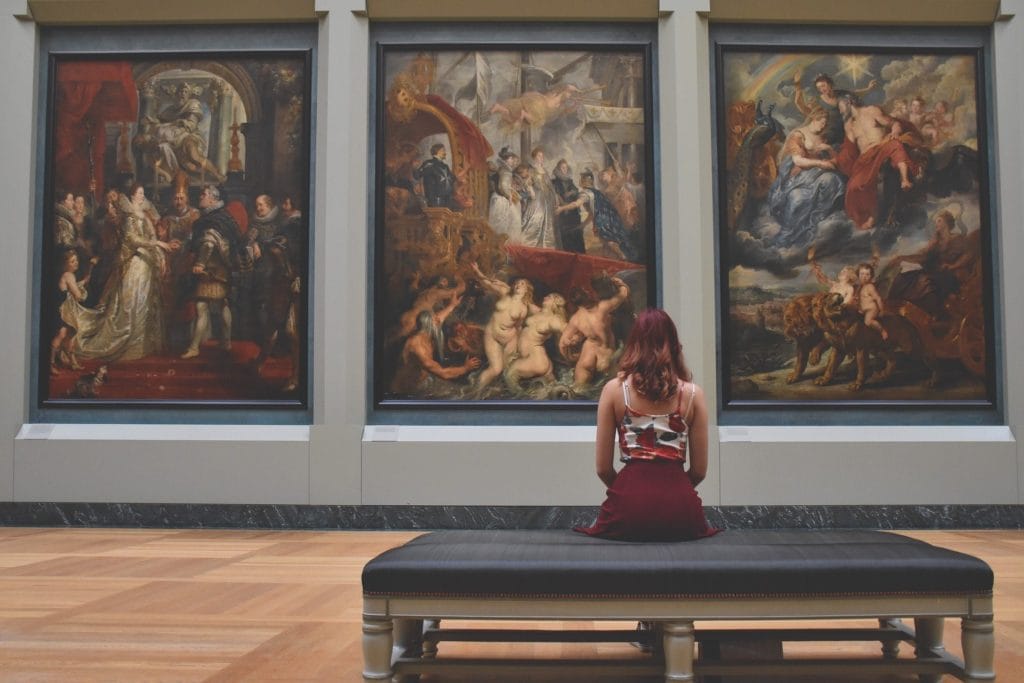Oxfordshire Mind’s Physical Activity Team are offering a weekly ‘virtual walk’ this week the team are exploring the Louvre after dark.
Hello everyone! Bienvenue to our very special walk today, through the famous Musee du Louvre in Paris. We are very lucky, as museum management have put on a special late-night opening just for us, which will enable us to see all the beauty of the collections without the crowds of tourists that usually flock to the museum.
We are beginning our walk at one end of the beautiful park that borders the Louvre, the Jardin des Tuileries. The last rays of the sun are an orange glow on the horizon and the rest of the gardens are plunged into a deep blue twilight as we stroll through the straight, tree-lined alleys, past statues and fountains.
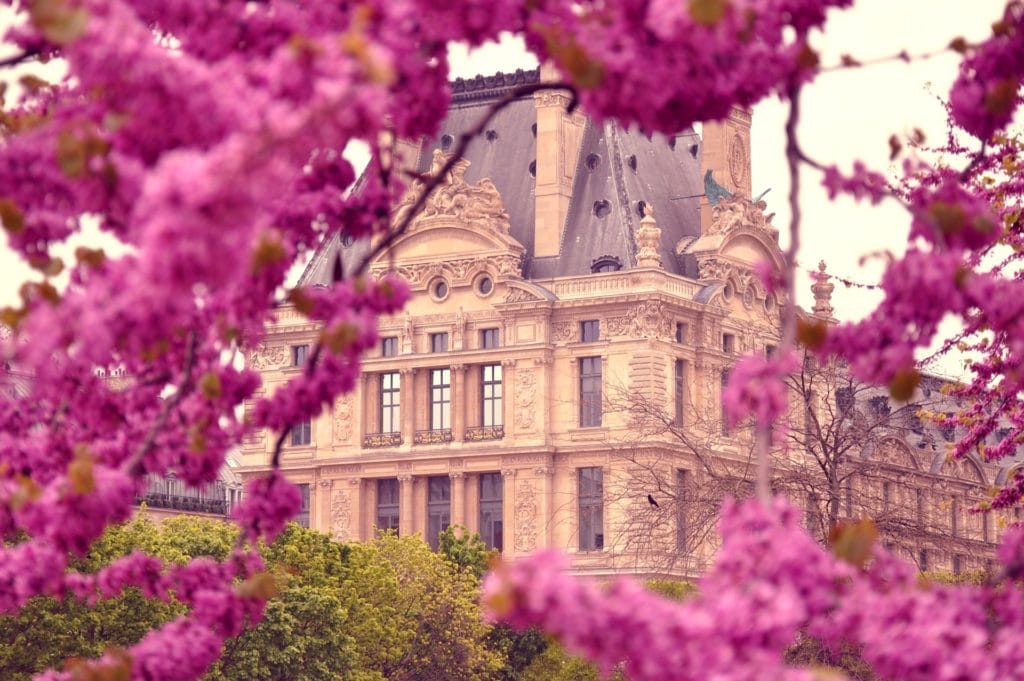
It’s mid-April, and at this time of year, the Tuileries are full of flowers, from the bright formal displays in the flowerbeds to the delicate pink cherry blossom that hangs on the trees. In the fading light their colours are dimmed, but their scent still hangs in the air, alongside the almost undetectable smell of the warm air rising from the ground after an unusually sunny spring day. You can hear the soft murmur of water playing in the fountains and the occasional twitter of birdsong, as well as the muted sounds of the city outside the park – the car engines and the sirens and occasional bursts of music.
Finally we reach the end of the garden and come out in the huge central courtyard of the Louvre. This building was once the palace of the kings of France, and it’s a truly imposing sight, stretching around us on all three sides with its elegant French Renaissance facade. In the centre of the courtyard is the famous Louvre pyramid, a huge glass and metal structure, lit up with a warm yellow glow. The first stars, which are just starting to flicker into life above our heads , seem somehow part of the illuminations, as if a giant hand had put up a string of celestial fairy lights to add to the display.
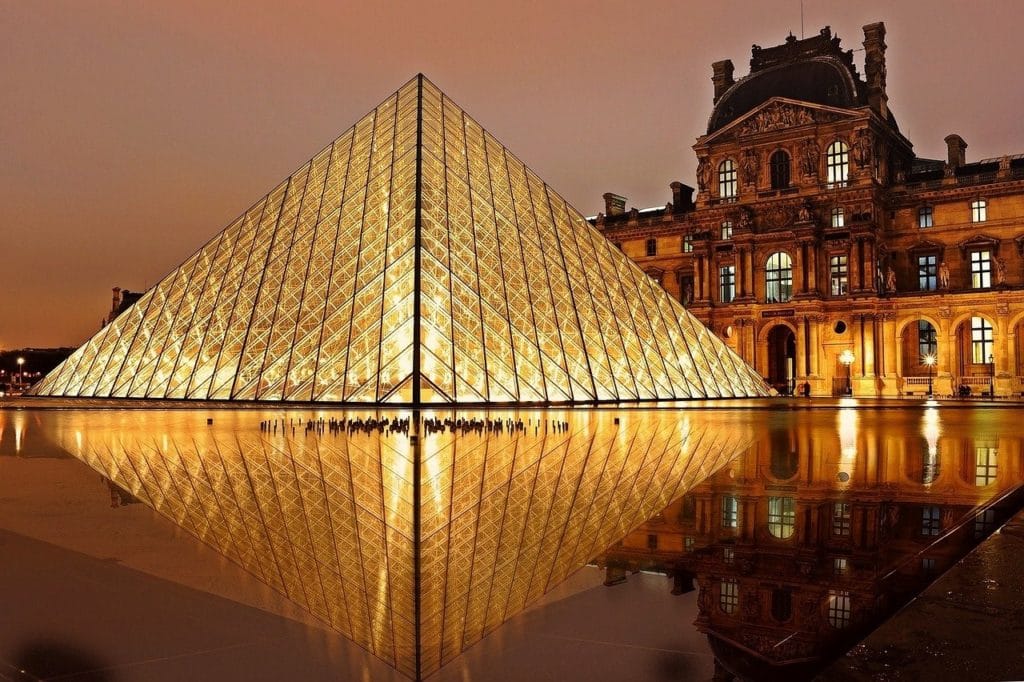
Let’s enter the building through the main entrance and go down to the basement ticket office. We should spend a moment studying the little maps they give you, and make a decision about the things we definitely want to see. The museum is such a massive place that you can’t possibly take it in in one visit- as well as the famous paintings by old masters, they have artefacts from most eras of history – African, Greek, Roman, Persian, Ancient Egyptian. You could probably spend weeks wondering through these galleries, lost in a strange parallel universe where the laws of time and space seem to twist and bend, where an hour can feel like ten minutes, and a day can feel like a month. Perhaps it’s a side effect of having pieces from so many different historical moments together in one space- after all, in a museum you can travel a thousand years and traverse continents simply by stepping through a doorway or climbing a flight of stairs.
We can’t say we’ve been to the Louvre unless we’ve seen the Mona Lisa and all the other Italian paintings, so why don’t we make that the focus of our visit. We’ll have to go up some stairs and through a few other rooms on our way, but hopefully it shouldn’t take us too long.
This way. We pass through little rooms and long galleries, each one of them different. One moment it’s busts of sombre Roman politicians with serious expressions. The next, cases and cases of Greek vases with their lively orange and black patterns. And another, sarcophagi and papyrus scrolls and statues of jackal-headed gods. It’s silent apart from the sound of our footsteps. You’d think it would be unnerving to be alone in a museum after dark- apart from the occasional security guard, of course – but somehow it’s not. The rooms are lit with a soft, warm light, and it’s so peaceful and still. You can forget that there’s a whole bustling city outside.
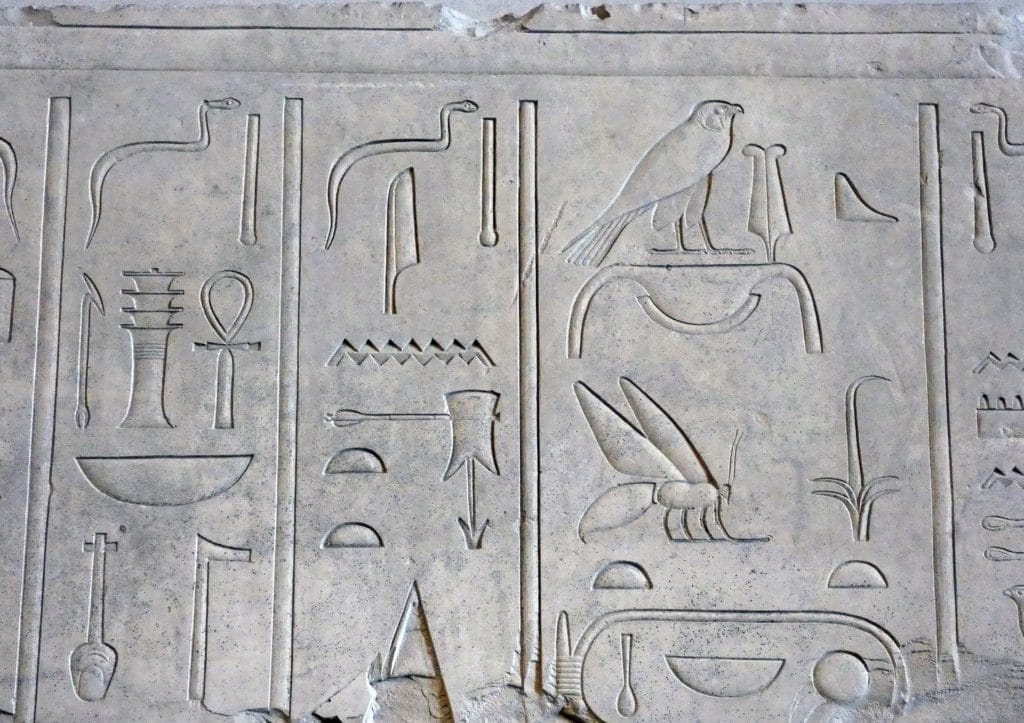
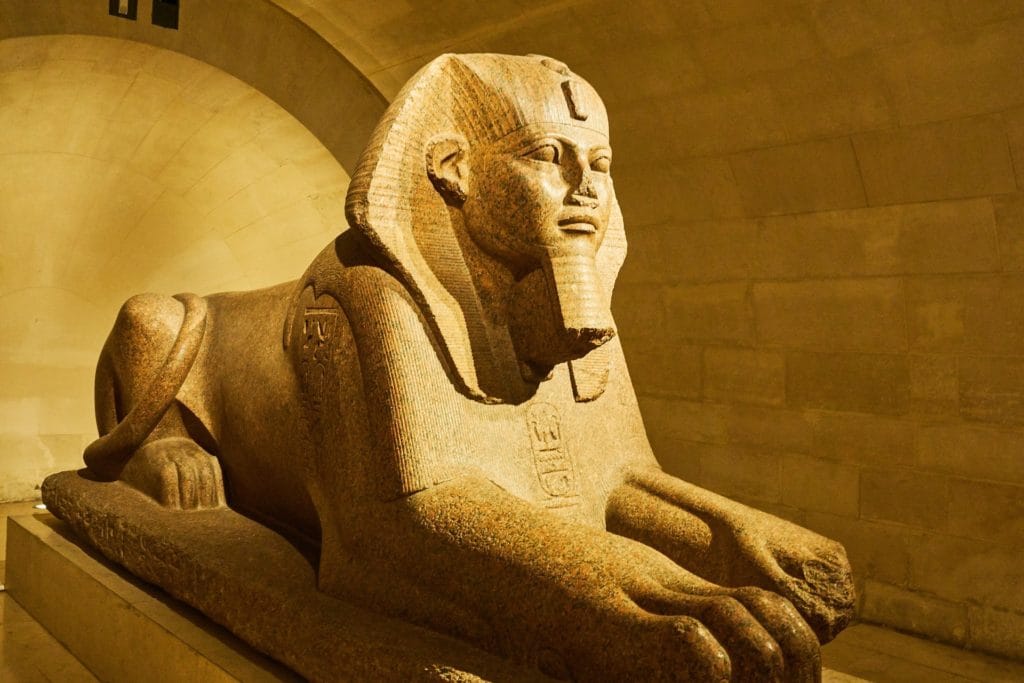
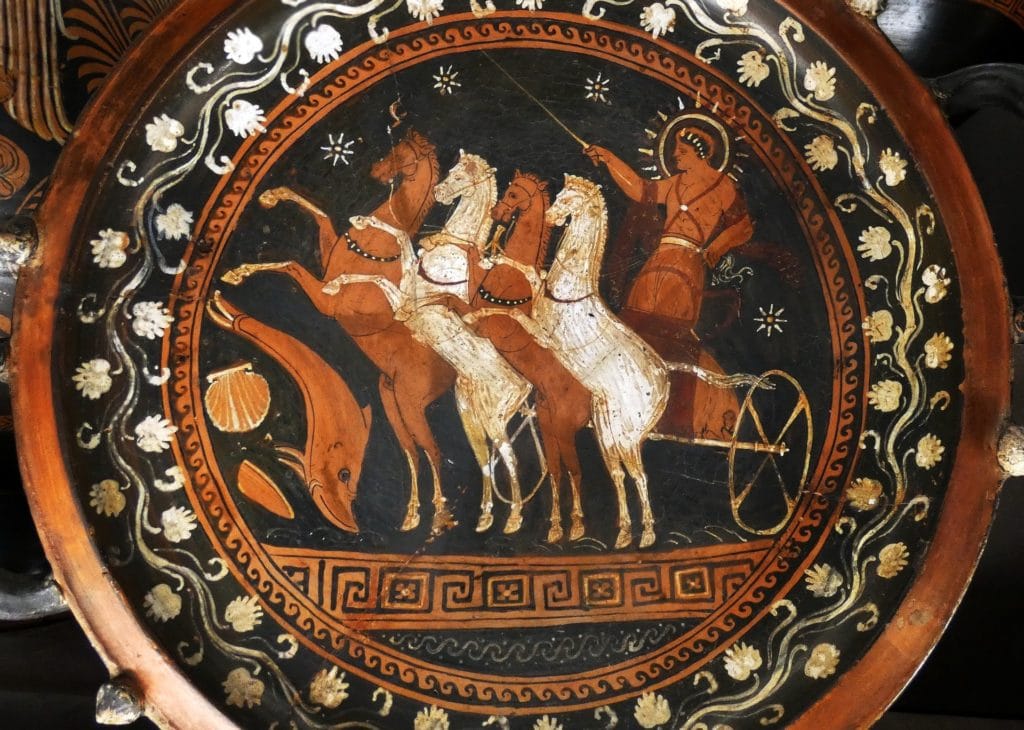
Oh dear. I think we must have taken a wrong turn, somehow, because we definitely weren’t supposed to end up here. I think these must be the Near Eastern galleries, where they have artefacts from ancient Iran, North Africa and the Levant. There’s something particularly awe- inspiring about the objects here – immense statues of bulls with heads of men; huge stone slabs carved with people hunting or riding chariots ; massive tablets crowded with writing in a script that only a handful of people nowadays can read. The little cards next to the artefacts list strange combinations of syllables- Hammurabi, Sumer, Akkad, Ashurbanipal – names of long-dead rulers, or of places that no longer exist. You can really feel the weight of history here, all the long years that separate us from the figures chiseled into the rock.
Let me just check the map again. Oh, I see what I was doing wrong. If I turn the map like this, I think… no, I’m certain. If we walk back through this room, and go up this staircase, just here, we’ll definitely be able to get where we need to go.
At the top of this staircase is a huge stone alcove, in the middle of which stands a colossal marble statue of a woman. Her robes billow about her as she steps forward, and immense wings unfurl from her shoulders, framing an empty space at the top of her neck. This is one of the Louvre’s most famous sculptures, The Winged Victory of Samothrace. The statue’s head was lost at some point long ago, so that her features can only be guessed at, and her arms are also missing. Like a lot of Greek sculpture that has come to us today in a damaged state, the statue’s incompleteness, the abruptness of the break in the flowing marble, almost seems to add to its beauty, drawing the eye back to it again and again with the eternal question: what if? Which just goes to show, things don’t have to be perfect to take your breath away.
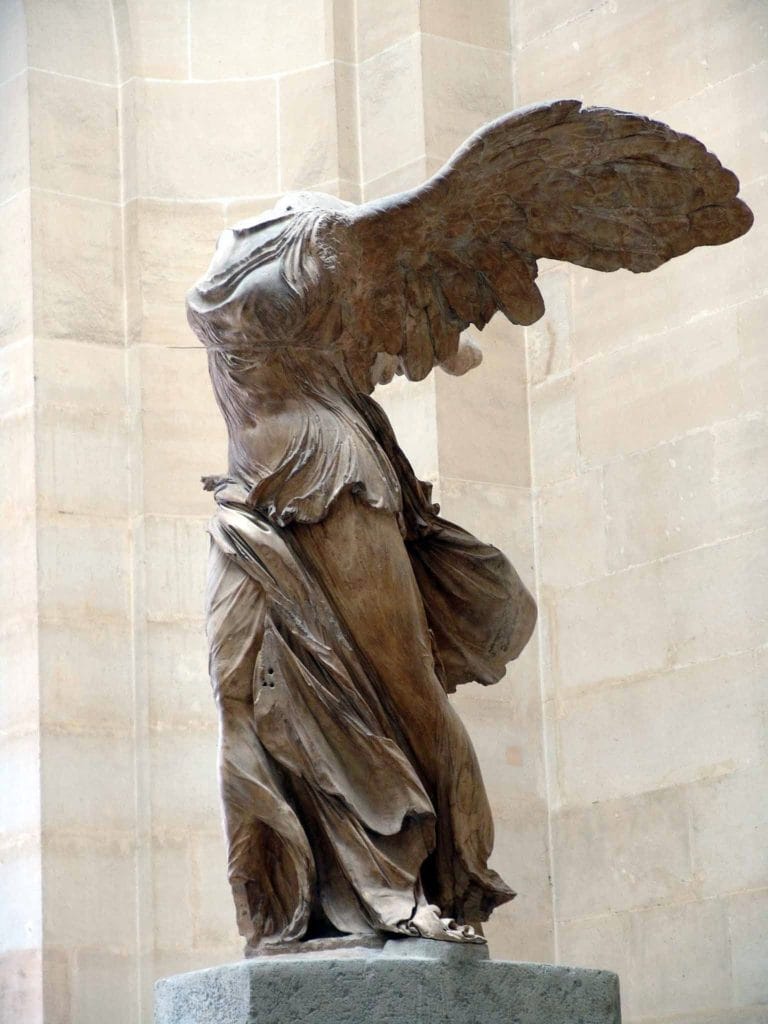
The Italian galleries are just here. If we turn left, and then left again, we should reach our destination. And there she is. The Mona Lisa. She has a wall all to herself, and sits in a special bulletproof glass enclosure. It’s a privilege to have a chance to stand here and gaze at her for so long- normally this room is so crowded that you can only catch a glimpse of the painting over the heads of dozens of other people. She’s smaller than you expect, but just as magnificent. That smile is so expressive, somehow, that you think she might open her mouth and speak at any moment. You almost want to ask her what she makes of all this, and whether it’s all the attention lavished on a modest little painting like her that that she finds so amusing.
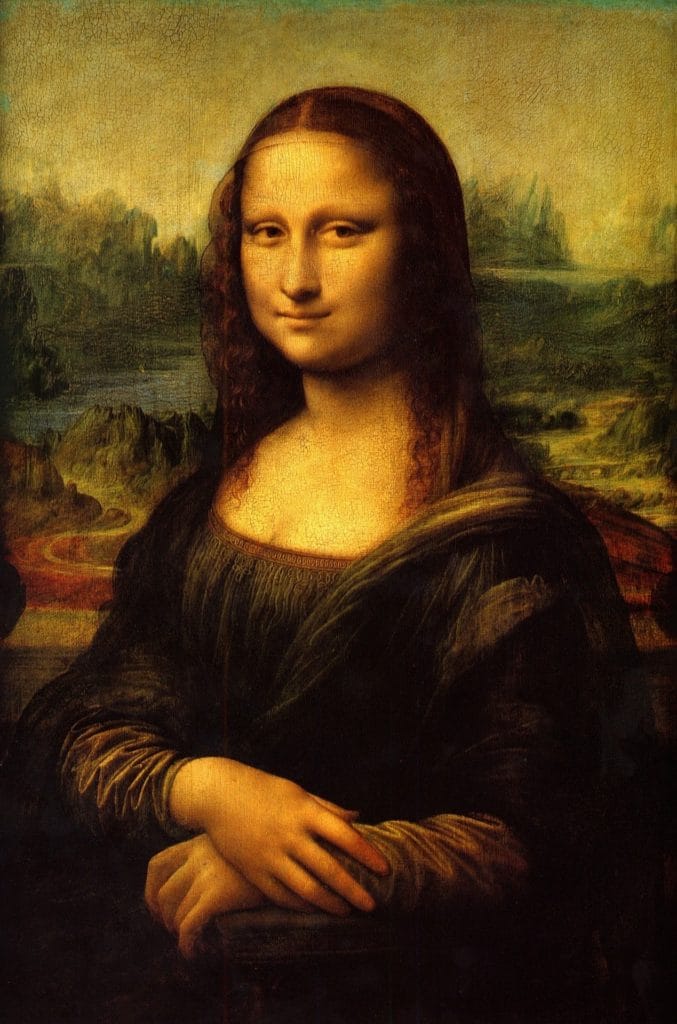
The only other person in the room with us is a guard, sitting on a chair in one corner of the room, eyes closed, head resting against her hand. It has been a long shift, I’m sure. But she’s not as unaware as she seems, because when we step just a little too close to the barrier, she starts upright and gives us a very disapproving stare. Oh dear. I think it’s probably time to move on. Shall we see what the rest of this section has to offer?
We stroll along the long gallery where most of the Italian paintings are housed. All the big names are here- Da Vinci, Titian, Botticelli, Raphael- and every single piece is a masterwork. Angels and Madonnas and little baby Jesuses rub shoulders with Italian nobles in their stiff finery. Look how delicately their features are picked out, the beautiful interplay of yellow, almost sepia-toned light and pools of deep shadow like coffee spilled over the canvas.
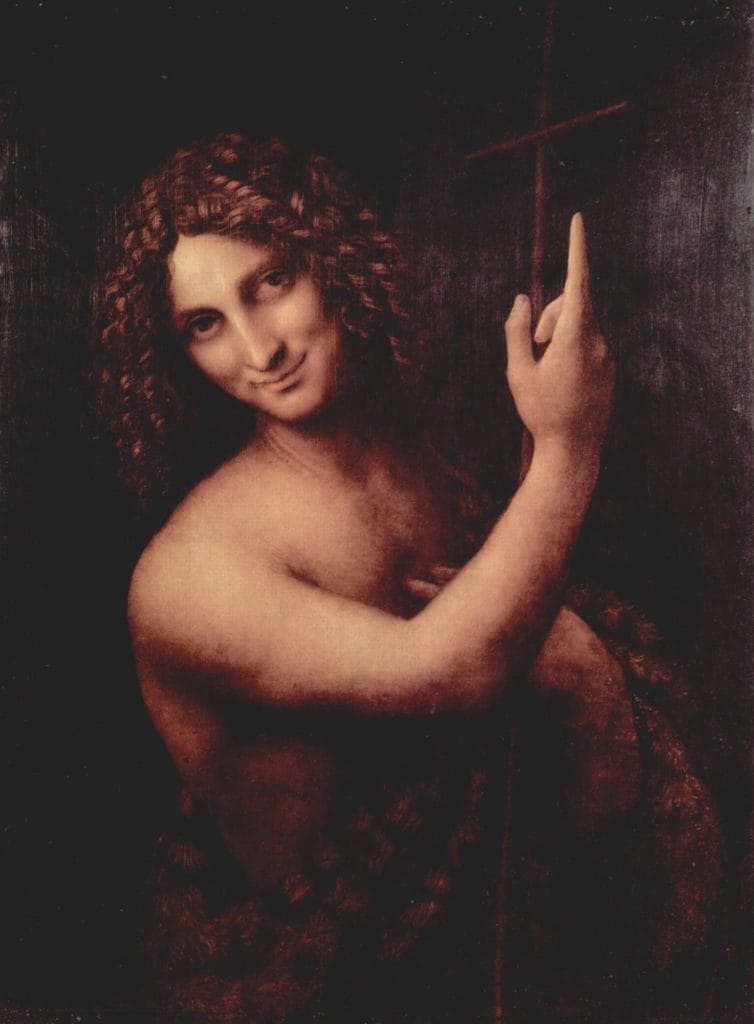
We’ve been walking a while, and it feels like time for a break. There’s a bench in the middle of the room, here. Let’s sit down for a moment and just appreciate the stillness and the quiet of the empty museum. We’ve still got a little bit of time left, so I wonder if we shouldn’t split up now, and go and investigate any remaining exhibits we want to see on our own. I’ll leave you to peruse your map and make some decisions. Have fun- and see you next week for another walk!
